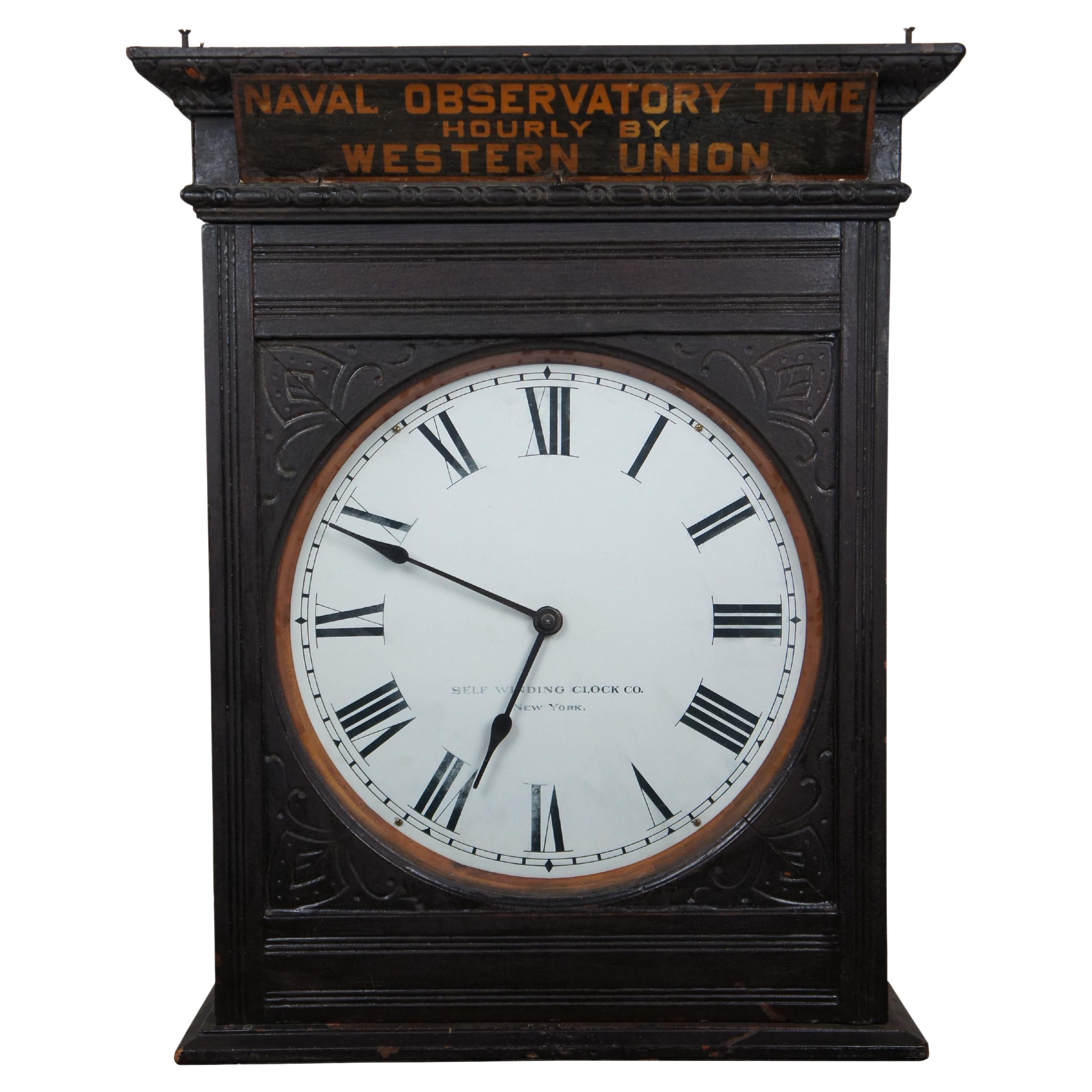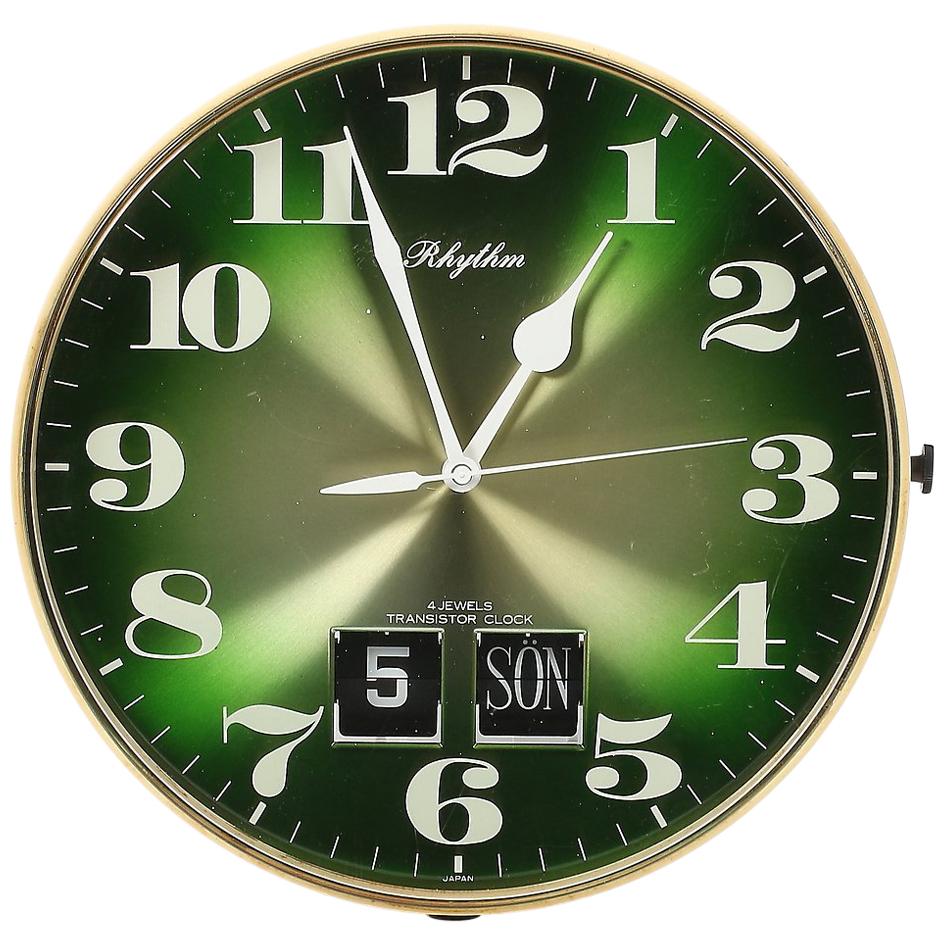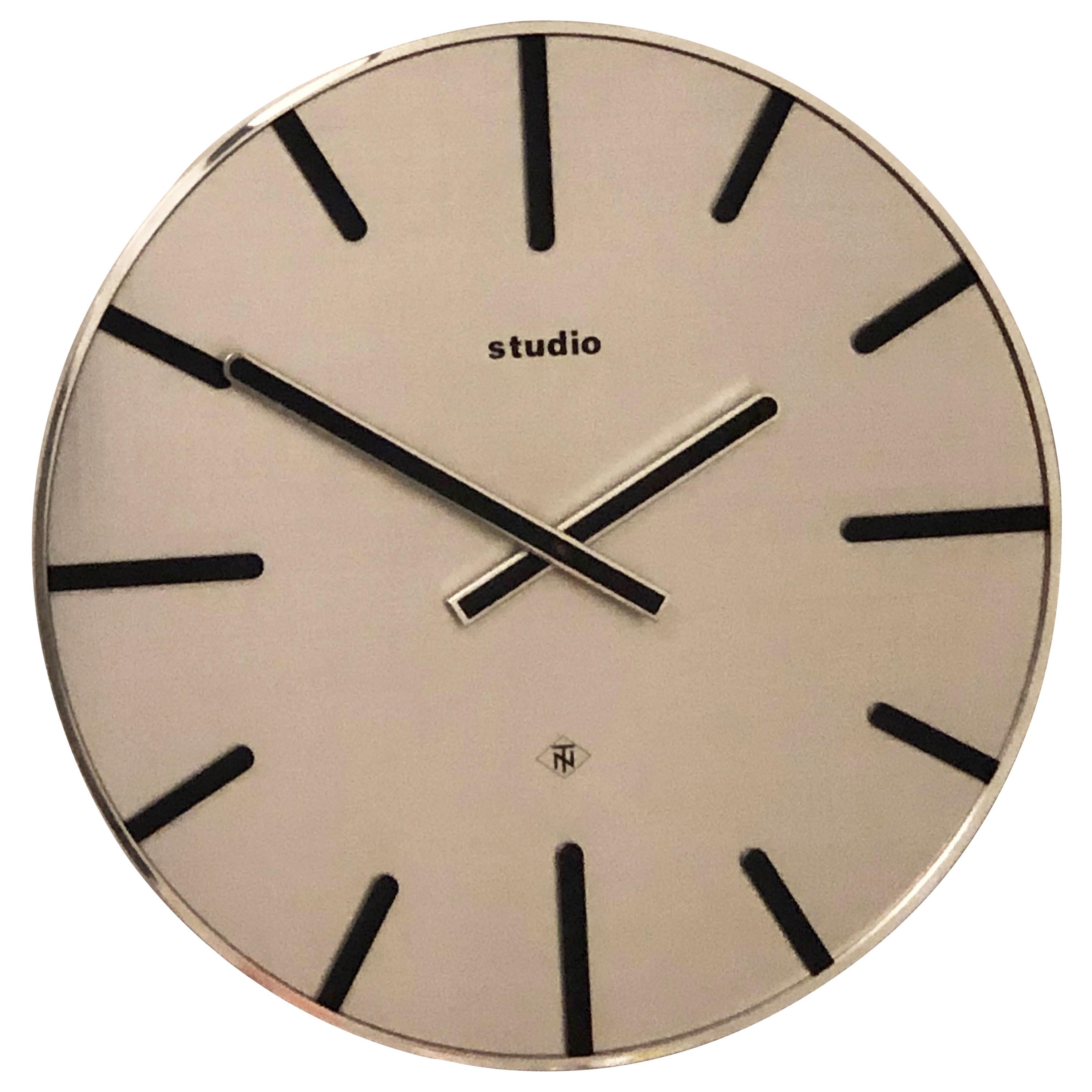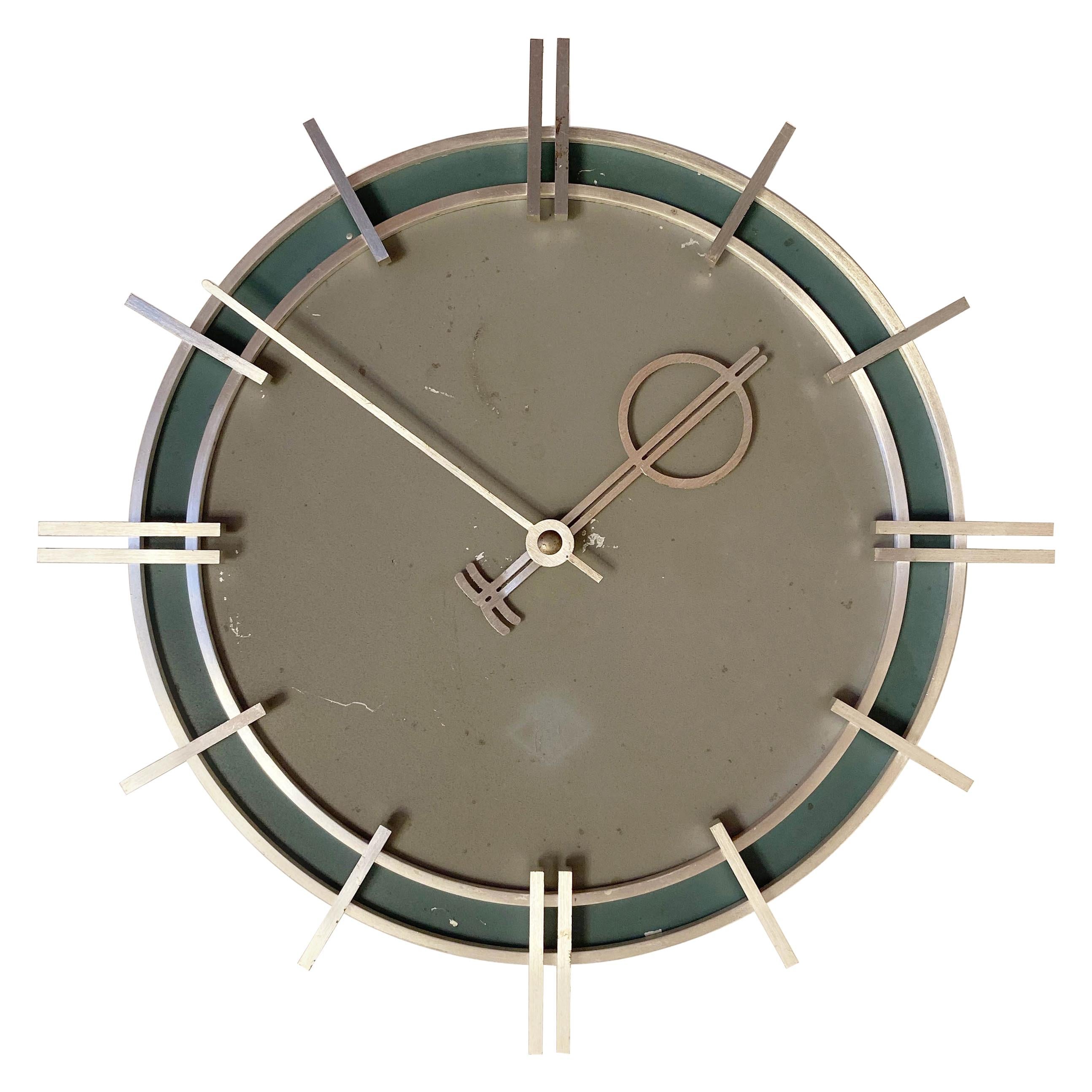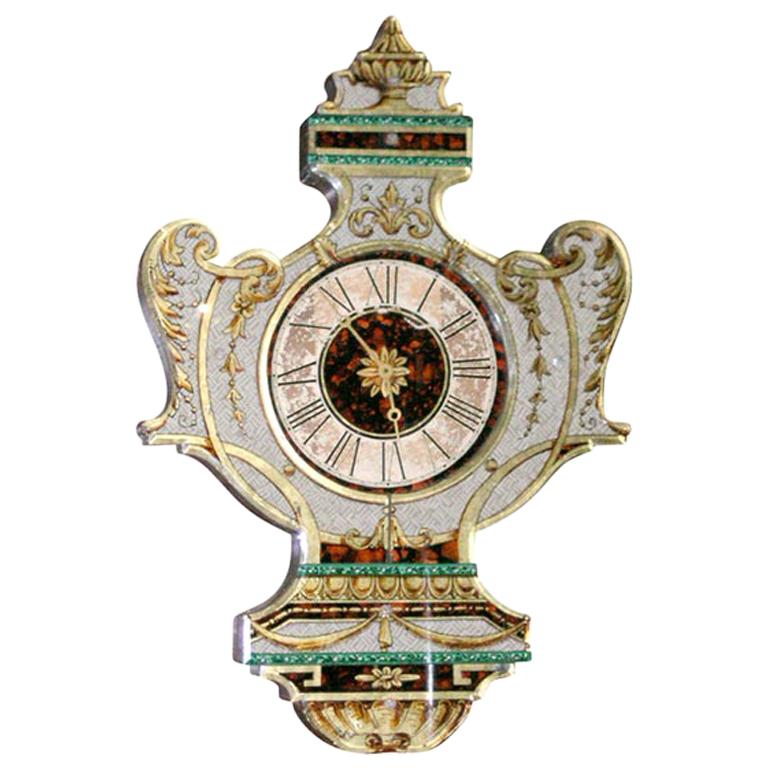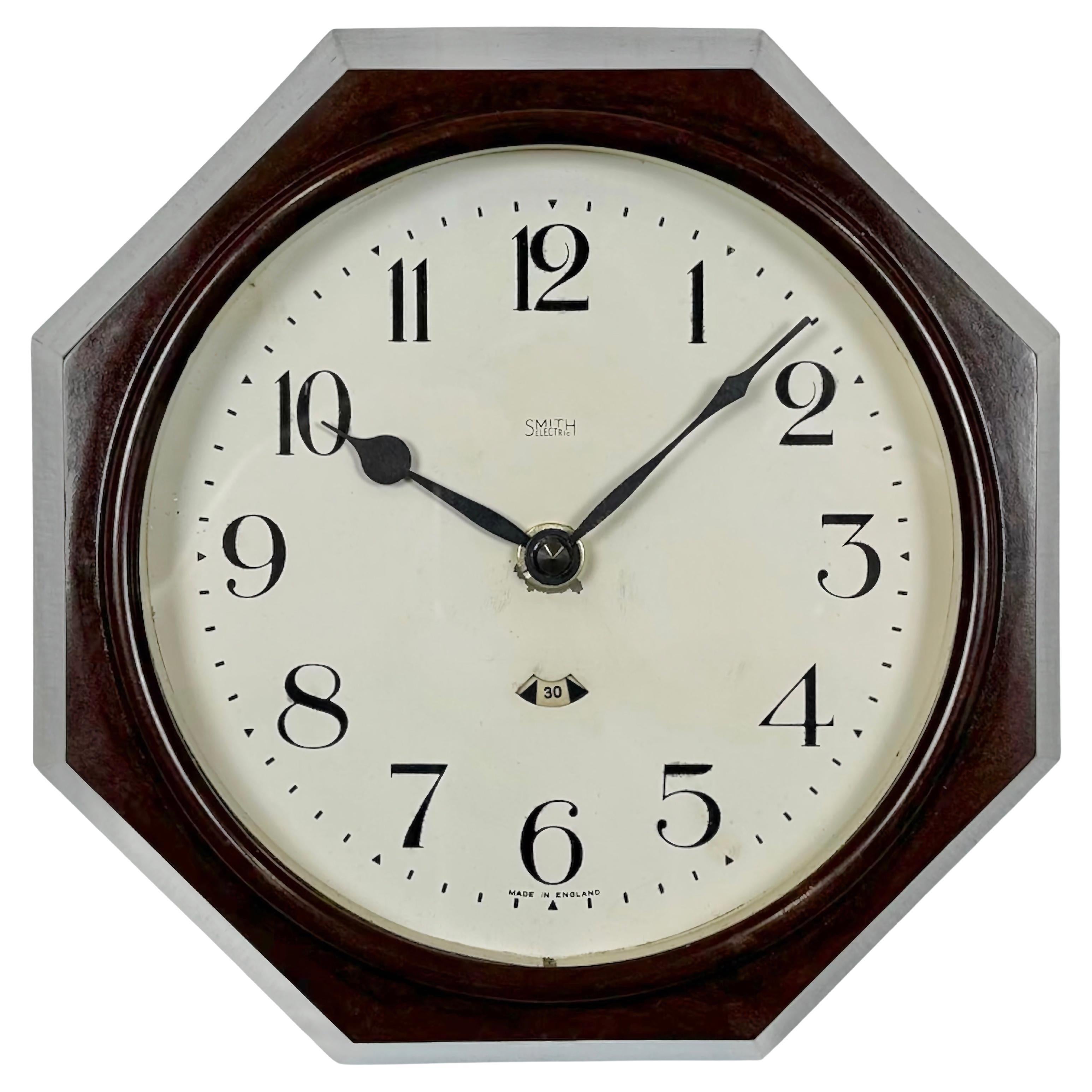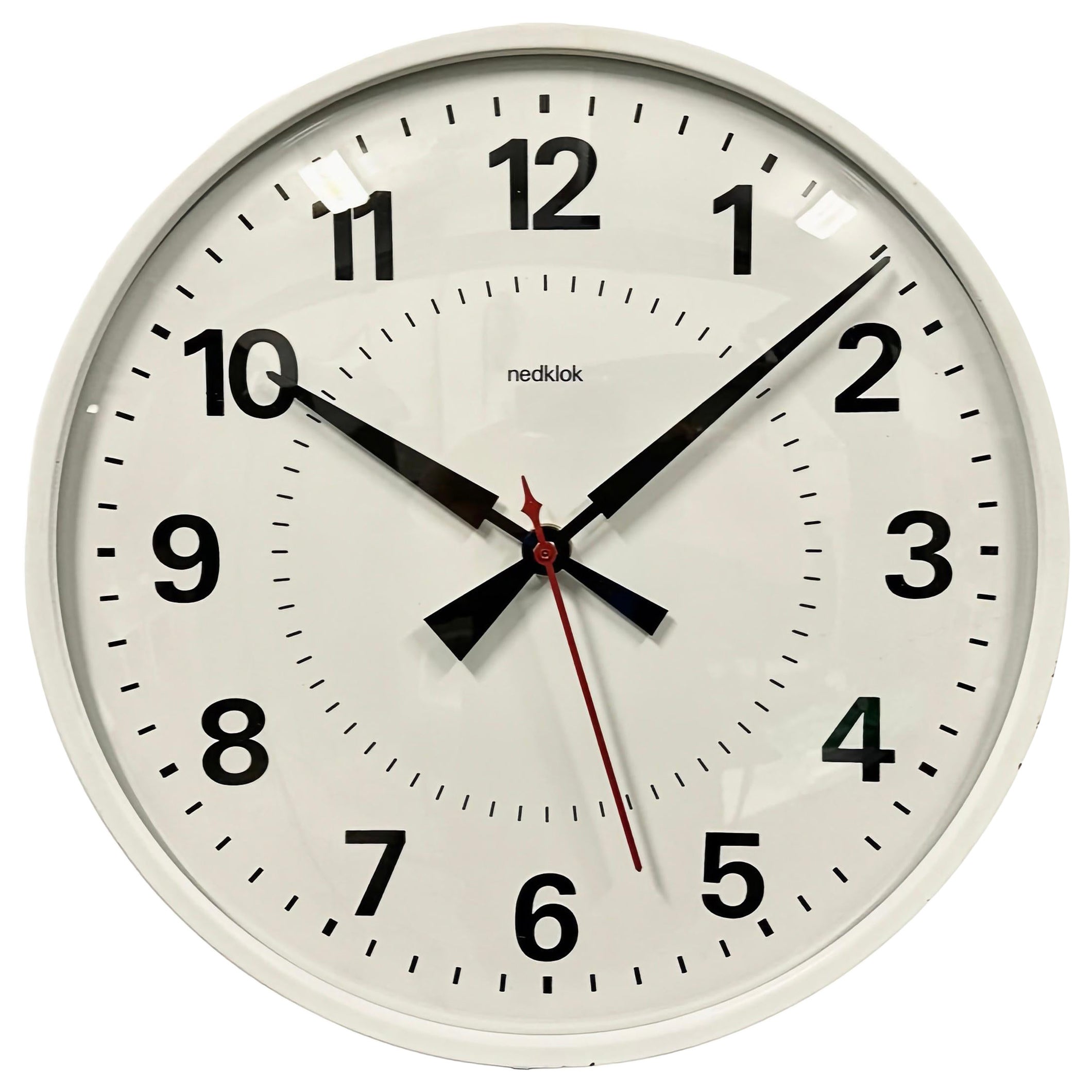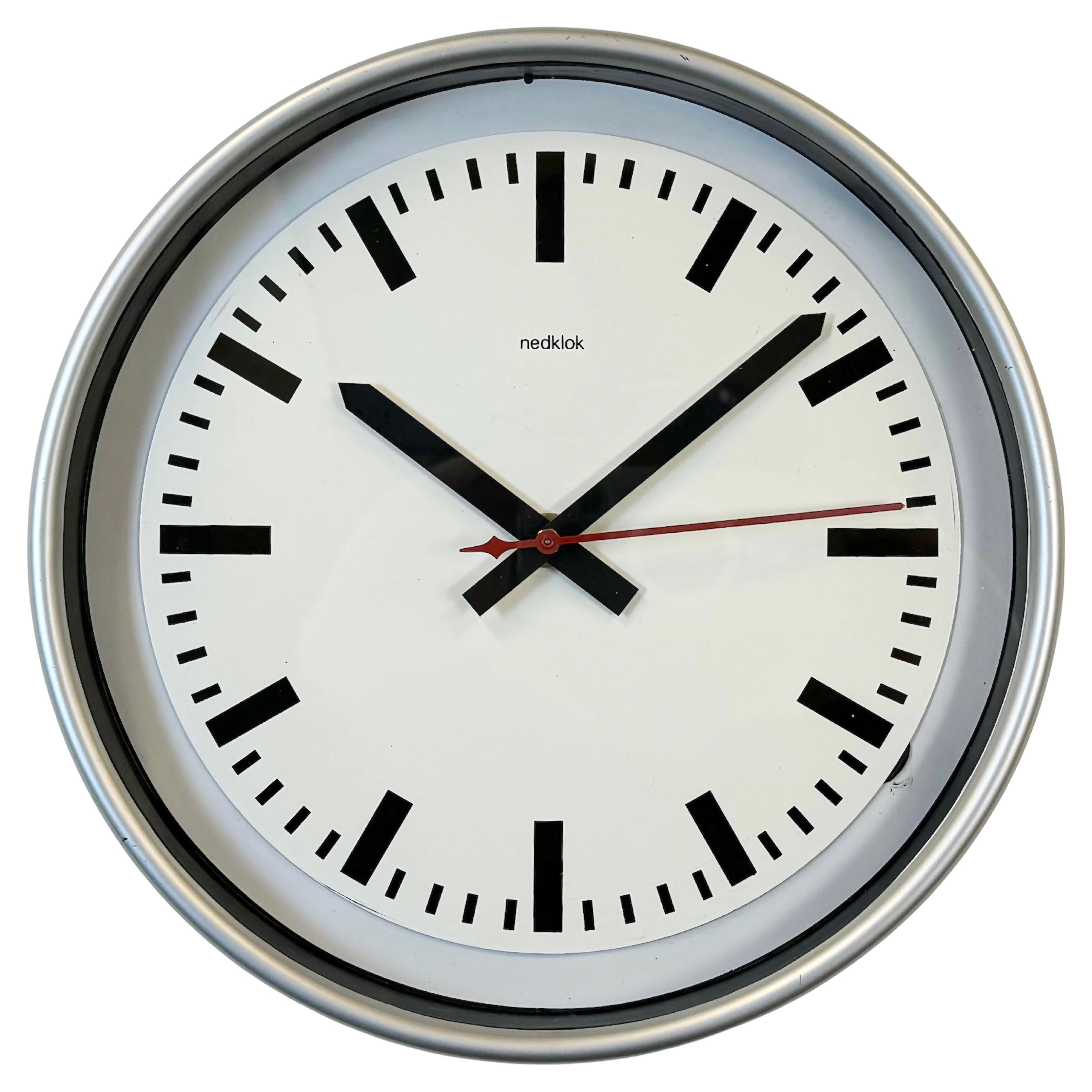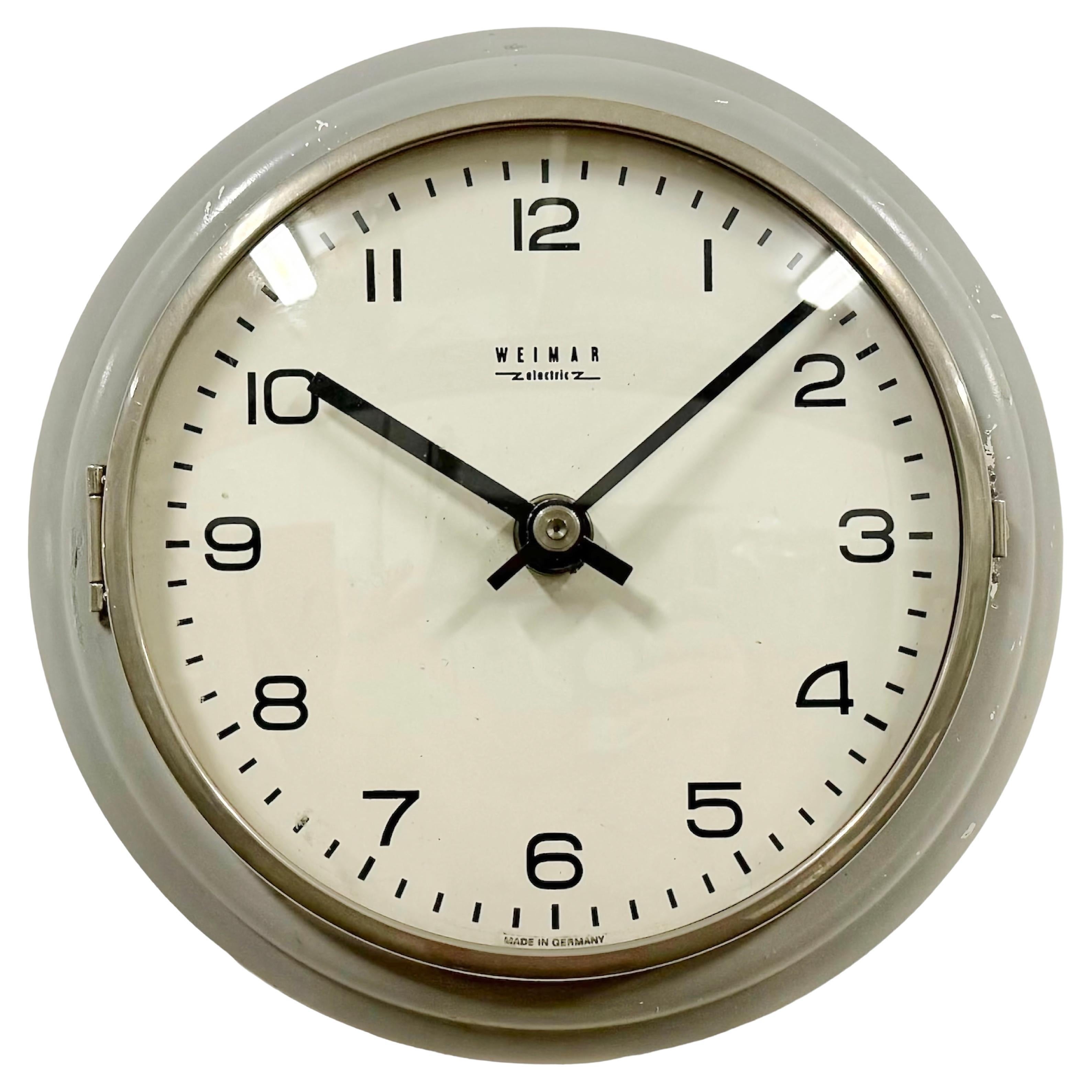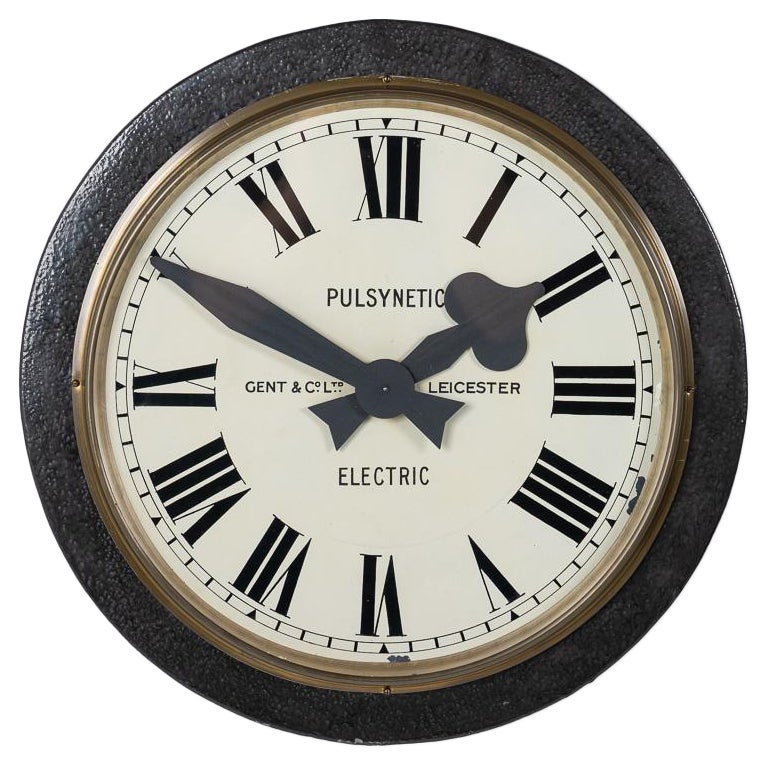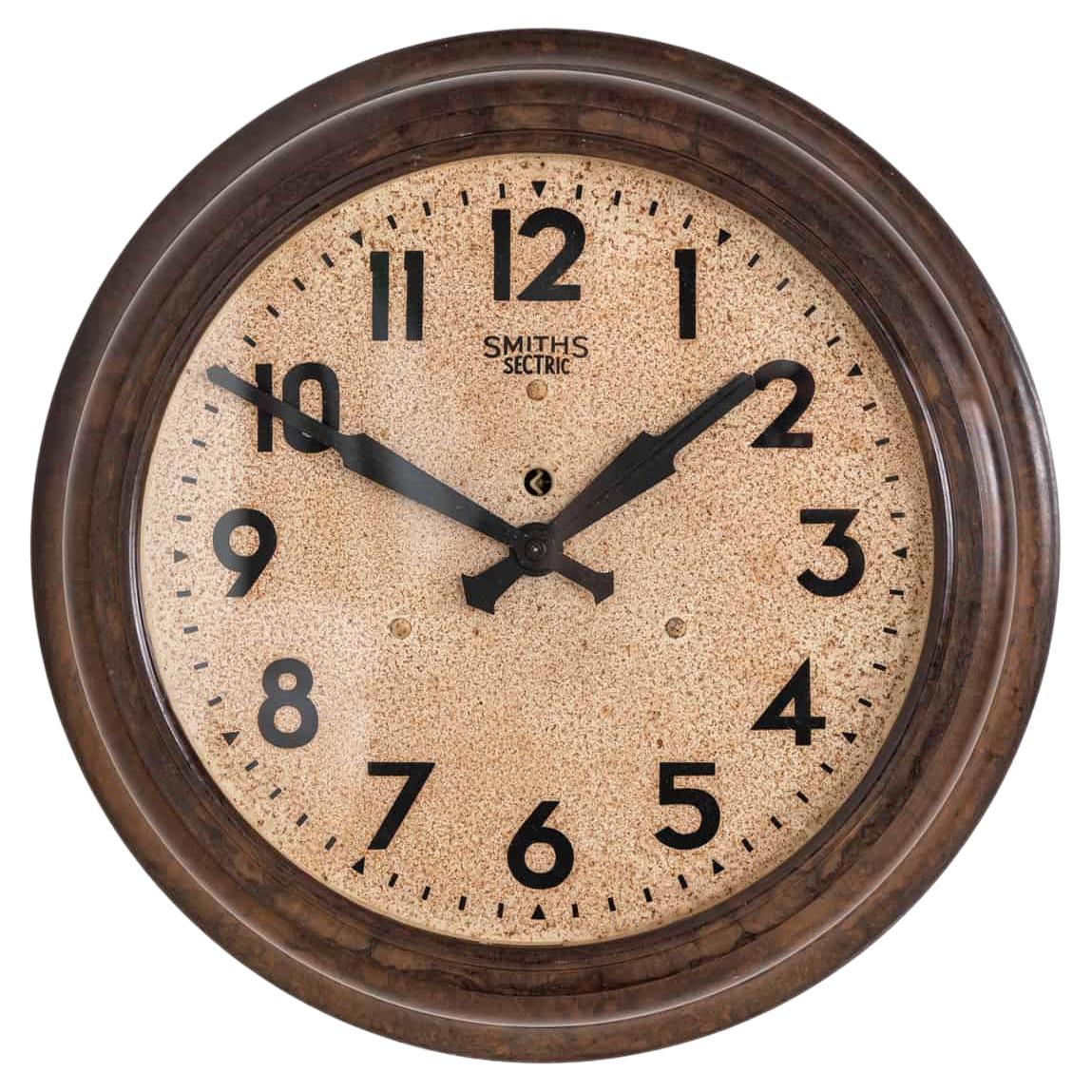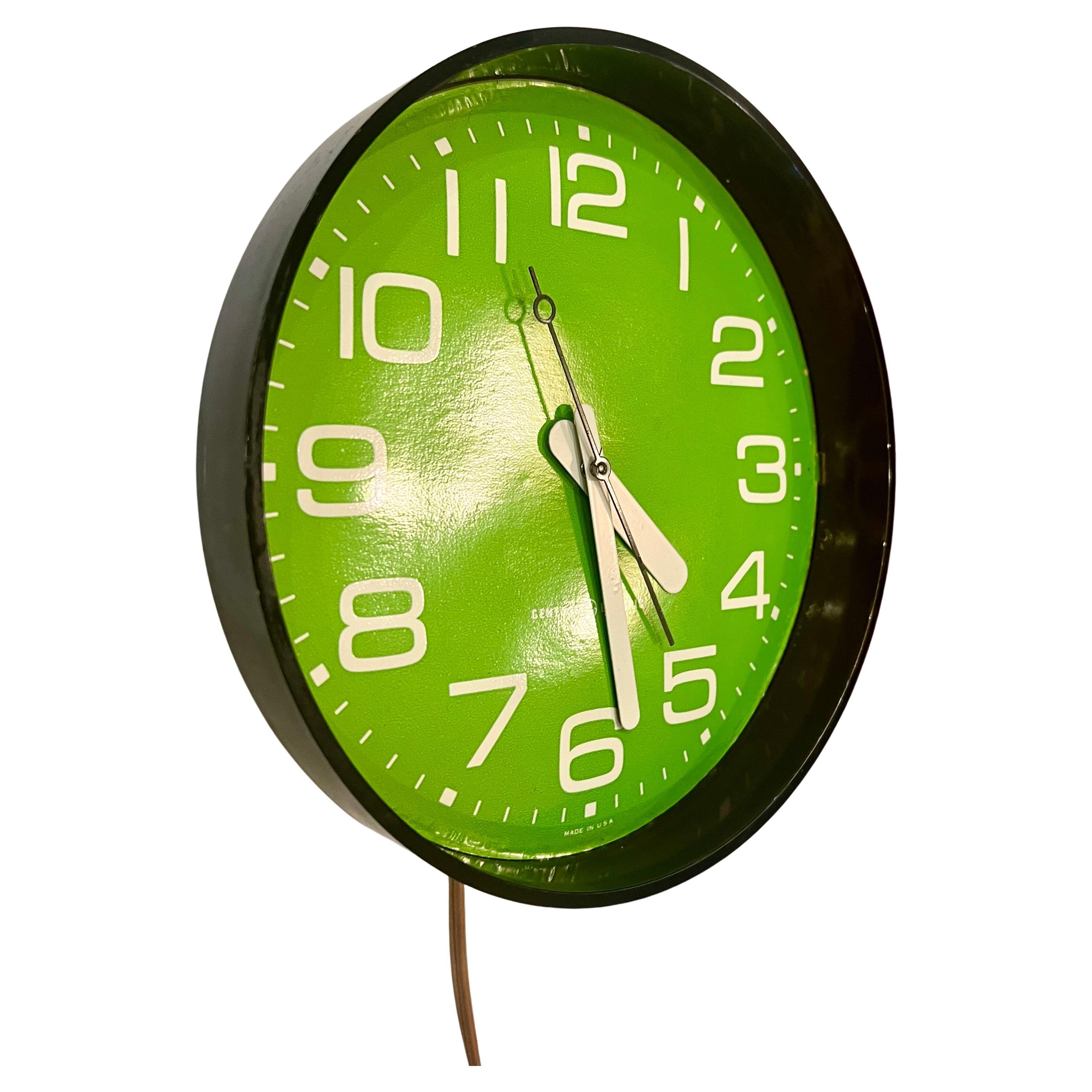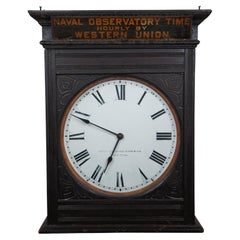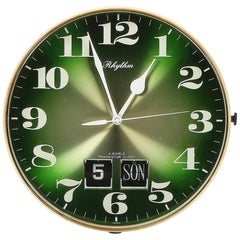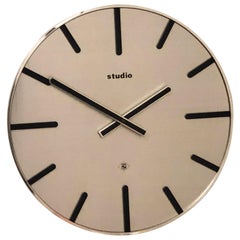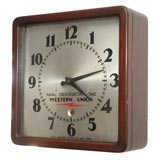
Unusual Western Union Electric Wall Clock
View Similar Items
1 of 7
Unusual Western Union Electric Wall Clock
About the Item
- Dimensions:Height: 14 in (35.56 cm)Width: 14 in (35.56 cm)Depth: 4.75 in (12.07 cm)
- Style:Industrial (Of the Period)
- Materials and Techniques:
- Place of Origin:
- Period:
- Date of Manufacture:circa 1930's
- Condition:Wear consistent with age and use. Very good condition. Movement works well. Usual minor non detracting blemishes for an antique.
- Seller Location:Culver City, CA
- Reference Number:Seller: 6a090802clx58zh111stDibs: 0610117989338
You May Also Like
- Rare Self Winding Clock Co Naval Observatory Time Western Union Wall Clock 26"By Self Winding Clock Co.Located in Dayton, OHAntique Western Union, Naval Observatory Time, self winding clock. Features a tall wooden case with carved corners and pediment mounted with tin sign reading "Naval Observatory Time Hourly By Western Union. White metal face with black Roman numerals and hands. Interior of case labeled "Property of Self-Winging Clock Co New York" and serial number on metal tag as well as on works. F Style / Vibrator movement, Serial Number 92630 (likely manufactured before 1917). Patented Oct. 4, 1898 by the Self Winding Clock Company. Fitted with Archer AC Adapter. "The Self Winding Clock Company (SWCC) of New York began business in 1886 marketing their own electro-mechanical clocks based on the 1884 electro-mechanical clock patent of one of the company founders, Chester Pond (1844-1912). The innovative principle of this clock mechanism was the incorporation of a small electric winding motor that automatically rewound the mainspring after the clock ran for one hour. The clocks were powered by batteries. The batteries would last at least one year. By being automatically rewound each hour, the strain on the mechanism was kept to a minimum, resulting in a very accurate timepiece. At about the same time SWCC began selling clocks, Pond was developing an electro-mechanical synchronizer attached to the clock movement that could synchronize the clock hands to an accurate time source. The synchronization occurs when a remote, precisely timed, electrical impulse is sent via wires connected to the individual clocks. By 1887 the synchronizers had been so improved that the Self Winding Clock Company could not only market individual clocks but also sell entire synchronized clock systems. By the 1960’s the days of individual elegant mechanical timepieces and synchronized time systems were over. SWCC ceased operations in the late 1960’s. All company records and inventories were relegated to the trash pile. The STYLE “F”, or as commonly referred to, the VIBRATOR movement was developed by Frederick M. Schmidt in the late 1890’s. By 1898 the “F” movement was being installed in almost all SWCC clocks. The movement has a Graham dead beat escapement. The “F” movement incorporates both the time train and winding motor in one set of plates. The motor used a single pair of coils. It was more reliable and easier to service than the rotary movement. The mainspring is re-wound after running for one hour. The vibrating armature oscillates up and down carrying a winding lever with a pawl that turns the winding wheel. The “F” movement was used in individual clocks and in clocks that were part of synchronized systems. It was made in 60, 80,120 and 140 beat versions. There were virtually no changes to the movement in 60 plus years the movement was in production. Almost all Style “F” movements wound on 3 volts DC. Style “F” movement serial numbers started in the 33,000’s and the first movements were probably made in 1898. The earliest plates had patent dates of 1891, 1892 & 1898. Serial numbers with these patent dates go up to the 63,000’s and were made before 1908. By 1908 the plates only had the 1898 patent date. By using catalog images of movement serial numbers it can be concluded that movements with serial numbers up to 112,000 were made in or before 1917. Movements with serial numbers up to 196,000’s were made in or before 1929. The single patent date serial numbers go as high as 220,000’s. Then there appears to be a large numbering gap. Finally, movements appear with no patent dates and serial numbers with the prefix FR. These numbers start at 300,000 but only continue to about 302,000. Start again at 400,000 and continue to about 402,000. Based on the large serial number gaps, the total number of “F” movements manufactured is probably around 200,000. They were manufactured between 1898 and possibly as late as the 1950’s. SWCC both sold clocks to and partnered with their biggest customer, Western Union in a nationwide distribution of precisely accurate “Naval Observatory Time” clocks. These either 120 or 140 beat Naval Observatory clocks...Category
Early 20th Century Late Victorian Wall Clocks
MaterialsMetal
- Elegant Japanese Rhythm Electric Wall ClockLocated in Vienna, ATBody made of plastic with plexiglas clock face made in Japan in the early 1970s. Fitted with a quartz movement with a battery. Delivery time 2-3 weeks.Category
Vintage 1970s Japanese Industrial Wall Clocks
MaterialsPlexiglass, Plastic
- German TN Telenorma Studio Electric Wall ClockLocated in Vienna, ATBody made of steel and aluminum and also aluminum hands partialy black painter made by TN Telenorma in the late 1970s. Formerly an office or factory sl...Category
Vintage 1970s German Industrial Wall Clocks
MaterialsSteel
- TN Telenorma Electric Wall ClockLocated in Vienna, ATBrass/steel body, painted clock face and steel clock hands made by TN Telenorma in the late 1960s. Used with some scratches on clock face Formerly a station or factory slave clock,...Category
Vintage 1960s German Mid-Century Modern Wall Clocks
MaterialsBrass
- Fanciful Eglomise Electric Wall ClockLocated in Stamford, CTReverse painted electric clock with Roman numerals in green, gold, cream, and tortoise pattern. .Category
Vintage 1940s Italian Wall Clocks
MaterialsGlass
- Brown Industrial Bakelite Wall Clock from Smith Electric, 1950sLocated in Kojetice, CZThis wall clock was produced by Smith electric in England during the 1950s. It features a brown bakelite frame, an iron dial, an aluminium hands and a clear glass cover. The piece ha...Category
Mid-20th Century British Industrial Wall Clocks
MaterialsIron
